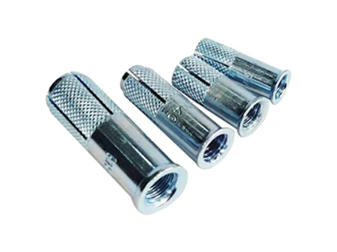ное. . 10, 2024 03:39 Back to list
Similar Mechanisms for Knob and Screw Functionality in Everyday Applications
Understanding Knobs and Screws Essential Components in Engineering and Design
In the world of engineering and design, the significance of small components such as knobs and screws cannot be overstated. These seemingly minor elements play a crucial role in the functionality, usability, and aesthetic appeal of a wide array of products, from everyday household items to sophisticated machinery. This article explores the various facets of knobs and screws, including their functions, types, and applications.
The Function of Knobs
Knobs are primarily designed for control and manipulation. Found on a multitude of devices such as ovens, audio equipment, and doors, knobs enable users to perform tasks with ease. The tactile feedback provided by a knob is one of its most essential features. Users can feel the resistance and position of the knob, which enhances their experience and allows for more precise adjustments.
When it comes to design, knobs vary widely in shape, size, and material. A well-designed knob can enhance the aesthetic appeal of a product while also improving functionality. For instance, a smooth, rounded knob might be ideal for a kitchen appliance, where users need to adjust settings frequently. In contrast, a more rugged, textured knob may be optimal for outdoor equipment, providing a firm grip even in challenging conditions.
The Role of Screws
Screws, on the other hand, are fundamental fasteners that hold components together. They work by creating a tight bond between materials, which is essential for the structural integrity of a wide variety of products. The basic design of a screw consists of a cylindrical shaft with a helical ridge (or thread) that allows it to be driven into materials with the use of a screwdriver or similar tool.
Screws come in various types, with each serving a unique purpose. For example, wood screws are designed specifically for wooden materials, whereas machine screws are used in more heavy-duty applications, often in conjunction with nuts and washers. Other variations include self-tapping screws, which can create their own threads in softer materials, and drywall screws, which are optimized for hanging drywall sheets.
knob screw

Applications in Everyday Life
The applications of knobs and screws are vast, encompassing various industries and products. In the automotive industry, knobs control everything from audio systems to climate control, while screws are used to assemble nearly every part of a vehicle, from the engine to the chassis. In household items, knobs can be found on appliances such as microwaves and refrigerators, providing a user-friendly interface for operation.
In the realm of furniture design, knobs serve not only as functional elements for opening drawers and cabinets but also as decorative features that can enhance the overall aesthetic of a piece. Similarly, screws are vital in furniture assembly, ensuring that pieces remain stable and secure.
Innovation and Future Trends
As technology advances, the design and functionality of knobs and screws continue to evolve. Smart devices increasingly incorporate touch-sensitive controls, which may eventually replace traditional knobs. However, the tactile experience of turning a knob is difficult to replicate digitally, suggesting that knobs will remain relevant in a hybrid form that integrates technology with tradition.
Similarly, the development of new materials and manufacturing techniques is leading to innovative screw designs that offer enhanced strength and versatility. For example, screws made from composite materials or those featuring unique thread patterns are becoming more common in specialized applications, such as in aerospace or biomedical devices.
Conclusion
In conclusion, knobs and screws are essential components in various industries, playing critical roles in both functionality and aesthetics. Their design, material, and application have significant implications for product usability and user experience. As we move forward in an ever-evolving technological landscape, understanding and innovating around these small yet mighty elements will continue to be of paramount importance in engineering and design. Whether you are a designer, engineer, or simply a curious consumer, appreciating the intricacies of knobs and screws enhances our understanding of the products we use every day.


